Attractions · Europe · Food and Drink · Going Out · Regions · Spain · Travel Miscellany · Western Europe
8 reasons why you should visit Cordoba
One thousand years ago, Cordoba was Medieval Europe’s powerhouse, its cultural leader. And the tolerant Islamic caliphate was surprisingly modern: architects recycled Roman ruins for the Mezquita, liberal thinking Caliphs had both men and women in their harems.
 Whilst Western European peasants worried that their wattle-and-daub might not see out the winter the Cordoba folk were carving intricate vegetal friezes into their sandstone. Whilst marauding Vikings were burning their boats, Cordoba’s Moslems were creating libraries.
1. The Mezquita
Cordoba was at the heart of a Caliphate of 250,000 people. Sweeping across Europe from Damascus, the Umayyad dynasty brought the architectural principles that still influence Andalusian design today. They carried with them the sophisticated personal hygiene of toothpaste and the rice that evolved into paella.
Whilst Western European peasants worried that their wattle-and-daub might not see out the winter the Cordoba folk were carving intricate vegetal friezes into their sandstone. Whilst marauding Vikings were burning their boats, Cordoba’s Moslems were creating libraries.
1. The Mezquita
Cordoba was at the heart of a Caliphate of 250,000 people. Sweeping across Europe from Damascus, the Umayyad dynasty brought the architectural principles that still influence Andalusian design today. They carried with them the sophisticated personal hygiene of toothpaste and the rice that evolved into paella.
 Moslems, in the immense Mezquita Mosque, which from its inception in 784 took over two centuries to complete, faced Damascus for prayer – from which the Umayyad had been expelled – rather than Mecca.
Today, in use as a Catholic Cathedral, the Mezquita represents Cordoba’s dual heritage. Remarkably when Cordoba was finally regained, by Reconquista forces in 1236, the Christians magnanimously allowed the Mosque to remain – using it as a shell for their cathedral. The 54 metre high minaret was converted to a bell tower.
Not only is a visit to the Mezquita free between 8.30 and 9.30 am, with fewer visitors and morning sunlight, it is also the best time to view the 1,293 red and white columns. Though back in the 16th Century, Charles V, the Spanish King, regretted giving permission for the construction of a vast Christian nave. It is a huge Cathedral that could have London’s St Paul’s for a tapas snack.
2. Flamenco
Moslems, in the immense Mezquita Mosque, which from its inception in 784 took over two centuries to complete, faced Damascus for prayer – from which the Umayyad had been expelled – rather than Mecca.
Today, in use as a Catholic Cathedral, the Mezquita represents Cordoba’s dual heritage. Remarkably when Cordoba was finally regained, by Reconquista forces in 1236, the Christians magnanimously allowed the Mosque to remain – using it as a shell for their cathedral. The 54 metre high minaret was converted to a bell tower.
Not only is a visit to the Mezquita free between 8.30 and 9.30 am, with fewer visitors and morning sunlight, it is also the best time to view the 1,293 red and white columns. Though back in the 16th Century, Charles V, the Spanish King, regretted giving permission for the construction of a vast Christian nave. It is a huge Cathedral that could have London’s St Paul’s for a tapas snack.
2. Flamenco
 Flamenco – a guitar-playing, castanet-clacking, finger-snapping, head-turning expressive form of song and dance has emerged from Andalusia’s troubled past. With tensions between Moorish descendants, Jews, Christians, gypsies, peasants and nobility there’s always someone wronged, with a doleful song to sing. Flamenco, often a theatrical show with dinner, is frequently an insistent statement of individuality. Dancers in vibrant frilled red dresses cast haughty stares over their shoulder and stamp their feet in protest.
3. Gastronomic innovation
Flamenco – a guitar-playing, castanet-clacking, finger-snapping, head-turning expressive form of song and dance has emerged from Andalusia’s troubled past. With tensions between Moorish descendants, Jews, Christians, gypsies, peasants and nobility there’s always someone wronged, with a doleful song to sing. Flamenco, often a theatrical show with dinner, is frequently an insistent statement of individuality. Dancers in vibrant frilled red dresses cast haughty stares over their shoulder and stamp their feet in protest.
3. Gastronomic innovation
 Pushing its pig-trotters and warm sherry heritage into the past, Cordoba is currently on a charge for recognition as Spain‘s gastronomic leader: you can even take a foodie tour of morning markets tasting chorizo, manchego, craft beers and wines. Throughout the tapas bars of the narrow streets and courtyards chefs are pushing gastronomic frontiers: squid croquettes in their own ink, aubergines in honey but the classics of anchovies on toast and Iberian Ham remain. Even olive oil, with its own museum and a shop that sells nothing but olive oil, has been elevated to the status of vintage fine wines. Visit Victoria Mercado, in the green park, to construct the ultimate tapas lunch or supper.
4. Los Patios
Pushing its pig-trotters and warm sherry heritage into the past, Cordoba is currently on a charge for recognition as Spain‘s gastronomic leader: you can even take a foodie tour of morning markets tasting chorizo, manchego, craft beers and wines. Throughout the tapas bars of the narrow streets and courtyards chefs are pushing gastronomic frontiers: squid croquettes in their own ink, aubergines in honey but the classics of anchovies on toast and Iberian Ham remain. Even olive oil, with its own museum and a shop that sells nothing but olive oil, has been elevated to the status of vintage fine wines. Visit Victoria Mercado, in the green park, to construct the ultimate tapas lunch or supper.
4. Los Patios
 The Jewish quarter of narrow and winding cobbled lanes has received UNESCO recognition. At 29 inches the Calleja des Panuelo, named because it is an alley the width of a handkerchief, is only just wider than the budget airline seats which fly visitors into nearby Malaga and Seville – they then continue their cultural pilgrimage by bus or train.
White-washed courtyards, with red geraniums in blue pots, decorated with orange trees and playing fountains are at their best in mid-May. That’s when the judging of over 50 of these patios takes place in the annual competition of “Los Patios.”
5. Craft workers
Amongst these narrow lanes and glimpses of cool, green oases of courtyards you’ll find the Zoco Mercado de Artesanis a collective of ten artesian craft workers continuing the traditions of intricate skilled work in ceramics, leather and silver that the Umayyad dynasty brought with them over a millennium ago.
The Jewish quarter of narrow and winding cobbled lanes has received UNESCO recognition. At 29 inches the Calleja des Panuelo, named because it is an alley the width of a handkerchief, is only just wider than the budget airline seats which fly visitors into nearby Malaga and Seville – they then continue their cultural pilgrimage by bus or train.
White-washed courtyards, with red geraniums in blue pots, decorated with orange trees and playing fountains are at their best in mid-May. That’s when the judging of over 50 of these patios takes place in the annual competition of “Los Patios.”
5. Craft workers
Amongst these narrow lanes and glimpses of cool, green oases of courtyards you’ll find the Zoco Mercado de Artesanis a collective of ten artesian craft workers continuing the traditions of intricate skilled work in ceramics, leather and silver that the Umayyad dynasty brought with them over a millennium ago.
 6. The Jewish Museum
At the heart of the Jewish Quarter, close to the synagogue, a Jewish museum, the Casa Seferad, is a reminder of Cordoba’s intolerant past: “First they burn books then they burn people” warns one of the quotes.
In the 1250s Cordoba’s Catholics seized on the opportunities presented by the Inquisition to exclude Jews from Public Office and increasingly to persecute them. Some Catholics made their pesos from researching family trees and blackmailing families with traces of Jewish blood in their ancestry. As hostility increased some Jews undertook a fake conversion reluctantly eating pork and omitting to celebrate Passover: antagonising both true Jews and Catholics who doubted their overhasty conversion.
7. The Castle
The Alcazar de Los Reys Christianos, a sturdy castle with beautiful orange blossom gardens, played a gruesome role in the torture that followed the establishment of the Spanish Inquisition in 1478. More positively, it was here in 1492 that King Ferdinand and Queen Isabella finalised negotiations with Christopher Columbus before they backed his voyage that discovered the New World.
6. The Jewish Museum
At the heart of the Jewish Quarter, close to the synagogue, a Jewish museum, the Casa Seferad, is a reminder of Cordoba’s intolerant past: “First they burn books then they burn people” warns one of the quotes.
In the 1250s Cordoba’s Catholics seized on the opportunities presented by the Inquisition to exclude Jews from Public Office and increasingly to persecute them. Some Catholics made their pesos from researching family trees and blackmailing families with traces of Jewish blood in their ancestry. As hostility increased some Jews undertook a fake conversion reluctantly eating pork and omitting to celebrate Passover: antagonising both true Jews and Catholics who doubted their overhasty conversion.
7. The Castle
The Alcazar de Los Reys Christianos, a sturdy castle with beautiful orange blossom gardens, played a gruesome role in the torture that followed the establishment of the Spanish Inquisition in 1478. More positively, it was here in 1492 that King Ferdinand and Queen Isabella finalised negotiations with Christopher Columbus before they backed his voyage that discovered the New World.
 8. A river walk
Finally, a walk along the wide Guadalquivir River, that flows onto Seville, provides another view of the sun setting on the carved sandstone of the Mezquita. From the recently refurbished Roman Bridge you can watch birds nesting in flourishing trees and see the remains of an old water mill. In summer, when temperatures soar into the mid-thirties, this is a rare green oasis in an arid landscape.
8. A river walk
Finally, a walk along the wide Guadalquivir River, that flows onto Seville, provides another view of the sun setting on the carved sandstone of the Mezquita. From the recently refurbished Roman Bridge you can watch birds nesting in flourishing trees and see the remains of an old water mill. In summer, when temperatures soar into the mid-thirties, this is a rare green oasis in an arid landscape.
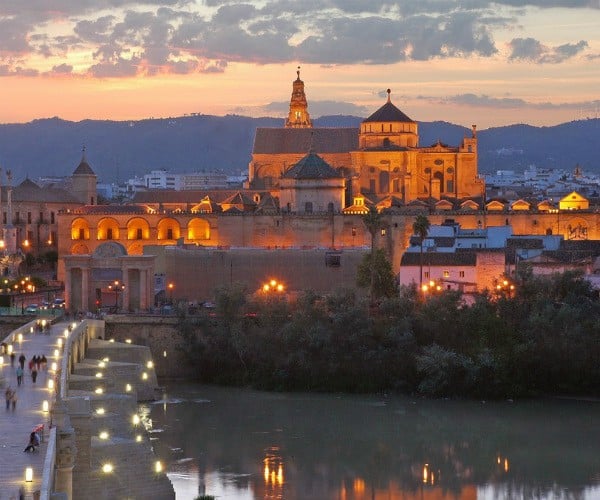 Whilst Western European peasants worried that their wattle-and-daub might not see out the winter the Cordoba folk were carving intricate vegetal friezes into their sandstone. Whilst marauding Vikings were burning their boats, Cordoba’s Moslems were creating libraries.
1. The Mezquita
Cordoba was at the heart of a Caliphate of 250,000 people. Sweeping across Europe from Damascus, the Umayyad dynasty brought the architectural principles that still influence Andalusian design today. They carried with them the sophisticated personal hygiene of toothpaste and the rice that evolved into paella.
Whilst Western European peasants worried that their wattle-and-daub might not see out the winter the Cordoba folk were carving intricate vegetal friezes into their sandstone. Whilst marauding Vikings were burning their boats, Cordoba’s Moslems were creating libraries.
1. The Mezquita
Cordoba was at the heart of a Caliphate of 250,000 people. Sweeping across Europe from Damascus, the Umayyad dynasty brought the architectural principles that still influence Andalusian design today. They carried with them the sophisticated personal hygiene of toothpaste and the rice that evolved into paella.
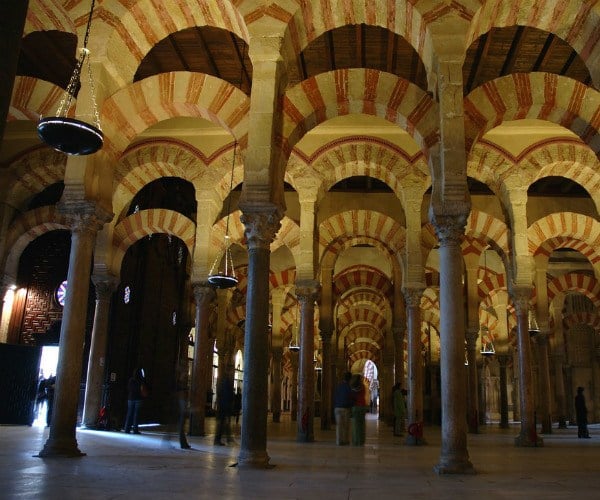 Moslems, in the immense Mezquita Mosque, which from its inception in 784 took over two centuries to complete, faced Damascus for prayer – from which the Umayyad had been expelled – rather than Mecca.
Today, in use as a Catholic Cathedral, the Mezquita represents Cordoba’s dual heritage. Remarkably when Cordoba was finally regained, by Reconquista forces in 1236, the Christians magnanimously allowed the Mosque to remain – using it as a shell for their cathedral. The 54 metre high minaret was converted to a bell tower.
Not only is a visit to the Mezquita free between 8.30 and 9.30 am, with fewer visitors and morning sunlight, it is also the best time to view the 1,293 red and white columns. Though back in the 16th Century, Charles V, the Spanish King, regretted giving permission for the construction of a vast Christian nave. It is a huge Cathedral that could have London’s St Paul’s for a tapas snack.
2. Flamenco
Moslems, in the immense Mezquita Mosque, which from its inception in 784 took over two centuries to complete, faced Damascus for prayer – from which the Umayyad had been expelled – rather than Mecca.
Today, in use as a Catholic Cathedral, the Mezquita represents Cordoba’s dual heritage. Remarkably when Cordoba was finally regained, by Reconquista forces in 1236, the Christians magnanimously allowed the Mosque to remain – using it as a shell for their cathedral. The 54 metre high minaret was converted to a bell tower.
Not only is a visit to the Mezquita free between 8.30 and 9.30 am, with fewer visitors and morning sunlight, it is also the best time to view the 1,293 red and white columns. Though back in the 16th Century, Charles V, the Spanish King, regretted giving permission for the construction of a vast Christian nave. It is a huge Cathedral that could have London’s St Paul’s for a tapas snack.
2. Flamenco
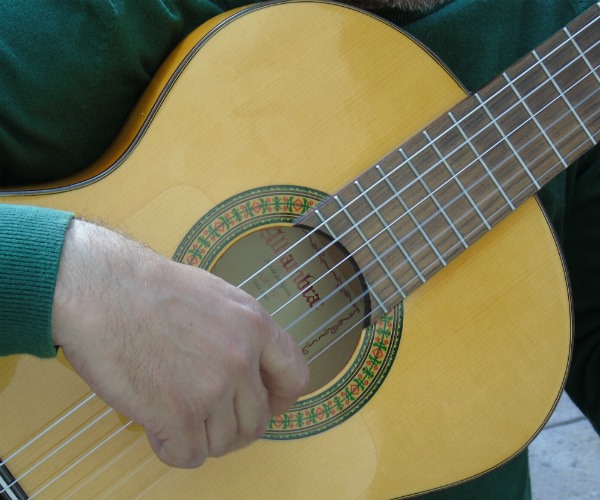 Flamenco – a guitar-playing, castanet-clacking, finger-snapping, head-turning expressive form of song and dance has emerged from Andalusia’s troubled past. With tensions between Moorish descendants, Jews, Christians, gypsies, peasants and nobility there’s always someone wronged, with a doleful song to sing. Flamenco, often a theatrical show with dinner, is frequently an insistent statement of individuality. Dancers in vibrant frilled red dresses cast haughty stares over their shoulder and stamp their feet in protest.
3. Gastronomic innovation
Flamenco – a guitar-playing, castanet-clacking, finger-snapping, head-turning expressive form of song and dance has emerged from Andalusia’s troubled past. With tensions between Moorish descendants, Jews, Christians, gypsies, peasants and nobility there’s always someone wronged, with a doleful song to sing. Flamenco, often a theatrical show with dinner, is frequently an insistent statement of individuality. Dancers in vibrant frilled red dresses cast haughty stares over their shoulder and stamp their feet in protest.
3. Gastronomic innovation
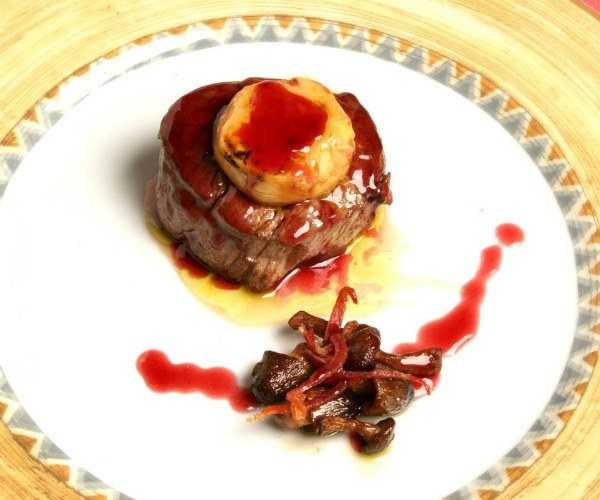 Pushing its pig-trotters and warm sherry heritage into the past, Cordoba is currently on a charge for recognition as Spain‘s gastronomic leader: you can even take a foodie tour of morning markets tasting chorizo, manchego, craft beers and wines. Throughout the tapas bars of the narrow streets and courtyards chefs are pushing gastronomic frontiers: squid croquettes in their own ink, aubergines in honey but the classics of anchovies on toast and Iberian Ham remain. Even olive oil, with its own museum and a shop that sells nothing but olive oil, has been elevated to the status of vintage fine wines. Visit Victoria Mercado, in the green park, to construct the ultimate tapas lunch or supper.
4. Los Patios
Pushing its pig-trotters and warm sherry heritage into the past, Cordoba is currently on a charge for recognition as Spain‘s gastronomic leader: you can even take a foodie tour of morning markets tasting chorizo, manchego, craft beers and wines. Throughout the tapas bars of the narrow streets and courtyards chefs are pushing gastronomic frontiers: squid croquettes in their own ink, aubergines in honey but the classics of anchovies on toast and Iberian Ham remain. Even olive oil, with its own museum and a shop that sells nothing but olive oil, has been elevated to the status of vintage fine wines. Visit Victoria Mercado, in the green park, to construct the ultimate tapas lunch or supper.
4. Los Patios
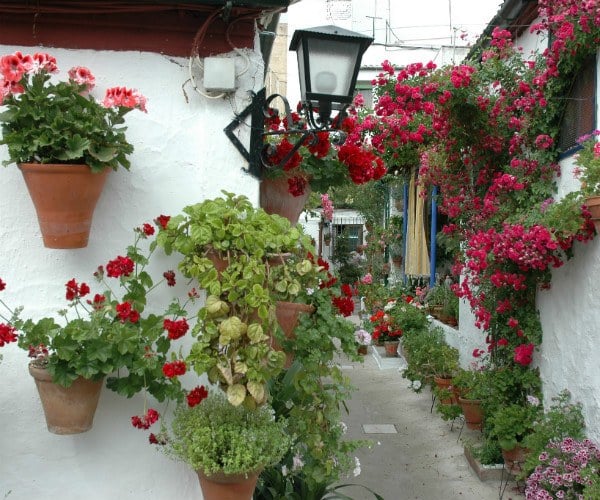 The Jewish quarter of narrow and winding cobbled lanes has received UNESCO recognition. At 29 inches the Calleja des Panuelo, named because it is an alley the width of a handkerchief, is only just wider than the budget airline seats which fly visitors into nearby Malaga and Seville – they then continue their cultural pilgrimage by bus or train.
White-washed courtyards, with red geraniums in blue pots, decorated with orange trees and playing fountains are at their best in mid-May. That’s when the judging of over 50 of these patios takes place in the annual competition of “Los Patios.”
5. Craft workers
Amongst these narrow lanes and glimpses of cool, green oases of courtyards you’ll find the Zoco Mercado de Artesanis a collective of ten artesian craft workers continuing the traditions of intricate skilled work in ceramics, leather and silver that the Umayyad dynasty brought with them over a millennium ago.
The Jewish quarter of narrow and winding cobbled lanes has received UNESCO recognition. At 29 inches the Calleja des Panuelo, named because it is an alley the width of a handkerchief, is only just wider than the budget airline seats which fly visitors into nearby Malaga and Seville – they then continue their cultural pilgrimage by bus or train.
White-washed courtyards, with red geraniums in blue pots, decorated with orange trees and playing fountains are at their best in mid-May. That’s when the judging of over 50 of these patios takes place in the annual competition of “Los Patios.”
5. Craft workers
Amongst these narrow lanes and glimpses of cool, green oases of courtyards you’ll find the Zoco Mercado de Artesanis a collective of ten artesian craft workers continuing the traditions of intricate skilled work in ceramics, leather and silver that the Umayyad dynasty brought with them over a millennium ago.
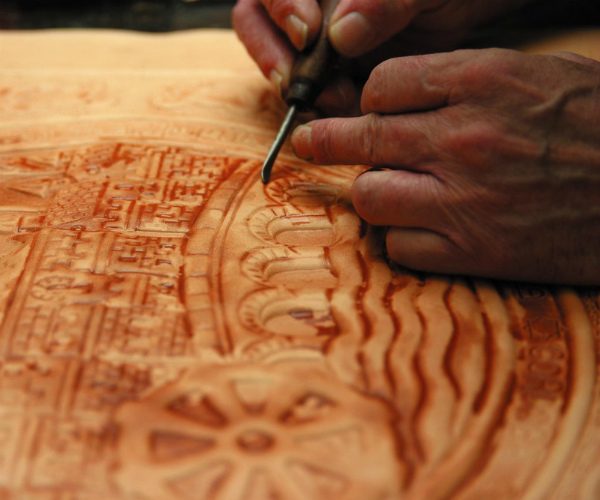 6. The Jewish Museum
At the heart of the Jewish Quarter, close to the synagogue, a Jewish museum, the Casa Seferad, is a reminder of Cordoba’s intolerant past: “First they burn books then they burn people” warns one of the quotes.
In the 1250s Cordoba’s Catholics seized on the opportunities presented by the Inquisition to exclude Jews from Public Office and increasingly to persecute them. Some Catholics made their pesos from researching family trees and blackmailing families with traces of Jewish blood in their ancestry. As hostility increased some Jews undertook a fake conversion reluctantly eating pork and omitting to celebrate Passover: antagonising both true Jews and Catholics who doubted their overhasty conversion.
7. The Castle
The Alcazar de Los Reys Christianos, a sturdy castle with beautiful orange blossom gardens, played a gruesome role in the torture that followed the establishment of the Spanish Inquisition in 1478. More positively, it was here in 1492 that King Ferdinand and Queen Isabella finalised negotiations with Christopher Columbus before they backed his voyage that discovered the New World.
6. The Jewish Museum
At the heart of the Jewish Quarter, close to the synagogue, a Jewish museum, the Casa Seferad, is a reminder of Cordoba’s intolerant past: “First they burn books then they burn people” warns one of the quotes.
In the 1250s Cordoba’s Catholics seized on the opportunities presented by the Inquisition to exclude Jews from Public Office and increasingly to persecute them. Some Catholics made their pesos from researching family trees and blackmailing families with traces of Jewish blood in their ancestry. As hostility increased some Jews undertook a fake conversion reluctantly eating pork and omitting to celebrate Passover: antagonising both true Jews and Catholics who doubted their overhasty conversion.
7. The Castle
The Alcazar de Los Reys Christianos, a sturdy castle with beautiful orange blossom gardens, played a gruesome role in the torture that followed the establishment of the Spanish Inquisition in 1478. More positively, it was here in 1492 that King Ferdinand and Queen Isabella finalised negotiations with Christopher Columbus before they backed his voyage that discovered the New World.
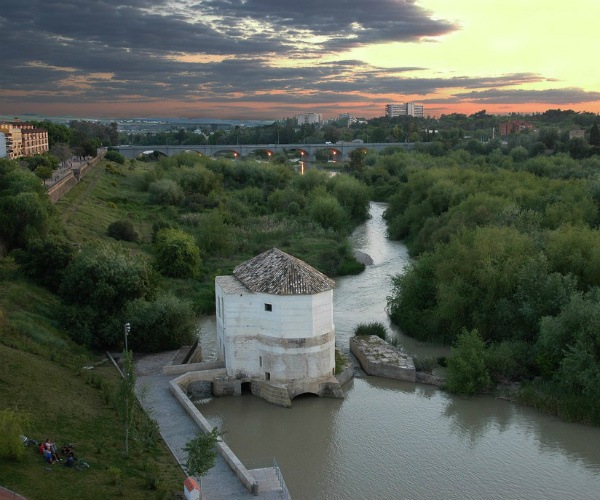 8. A river walk
Finally, a walk along the wide Guadalquivir River, that flows onto Seville, provides another view of the sun setting on the carved sandstone of the Mezquita. From the recently refurbished Roman Bridge you can watch birds nesting in flourishing trees and see the remains of an old water mill. In summer, when temperatures soar into the mid-thirties, this is a rare green oasis in an arid landscape.
8. A river walk
Finally, a walk along the wide Guadalquivir River, that flows onto Seville, provides another view of the sun setting on the carved sandstone of the Mezquita. From the recently refurbished Roman Bridge you can watch birds nesting in flourishing trees and see the remains of an old water mill. In summer, when temperatures soar into the mid-thirties, this is a rare green oasis in an arid landscape.Did you enjoy this article?
Receive similar content direct to your inbox.



Nice post, I have never been Cordoba but after read this I will visit it.Thanks for showing the real beauty of cordoba with beautiful pictures
nice article and Pictures i never visit before cordoba. After read your article i want come and see the beauty of Cordoba.
I like the vibrancy and the eclectic mix of people, architecture, creativity, and of course the rich history. Hadn’t ever really thought of a trip to Cordoba before. It has a very charming feel about it, as do the sweet cobbled lanes and courtyards.
Have been to Cordoba in 2019 and had the best steak ever!!